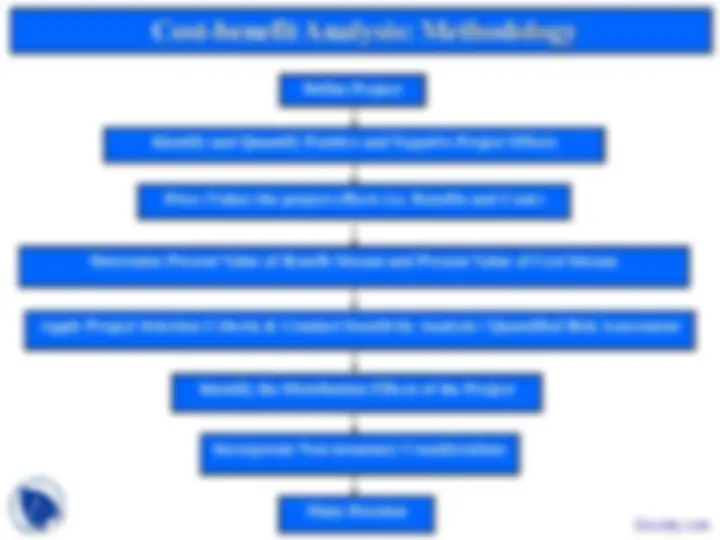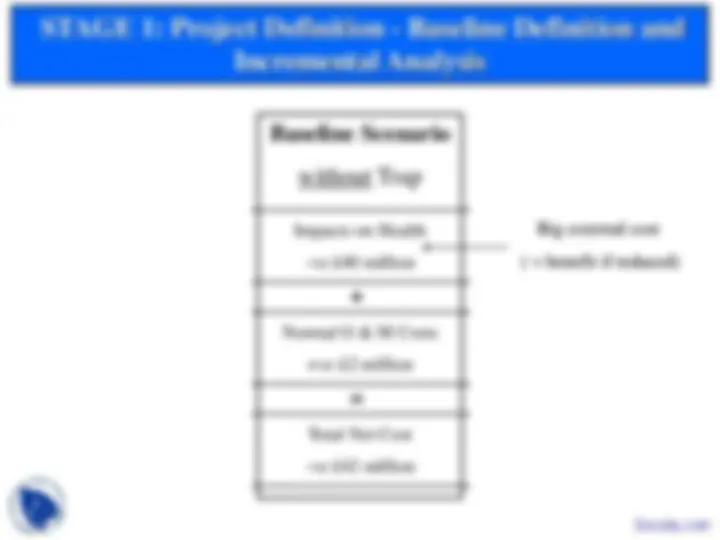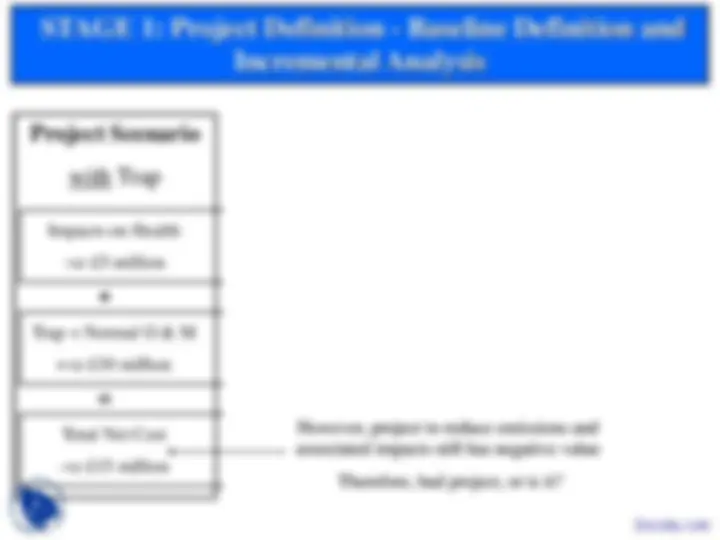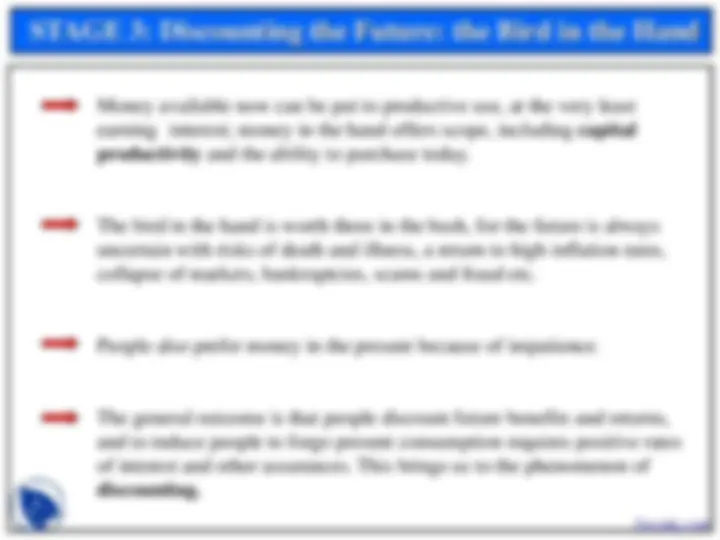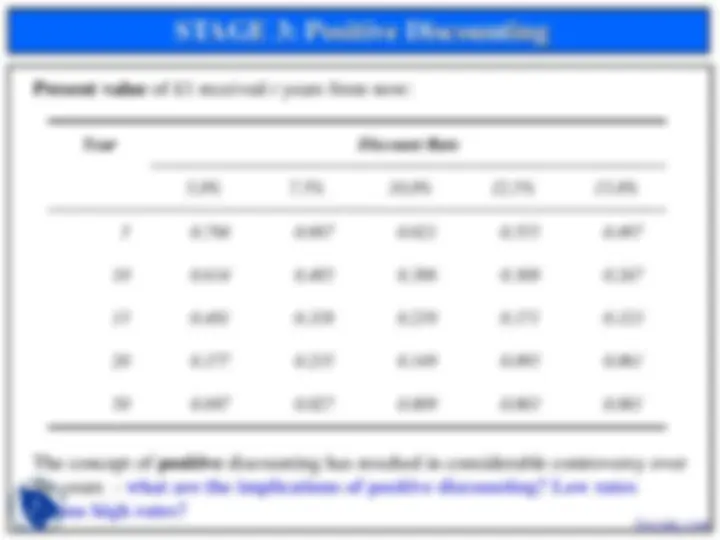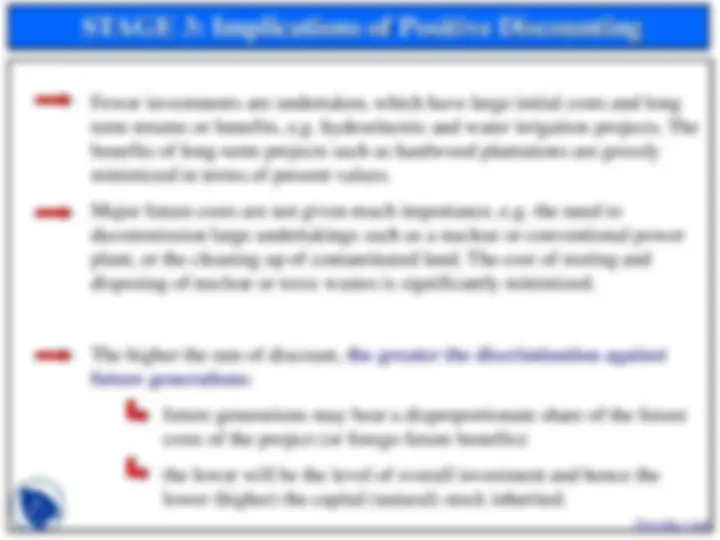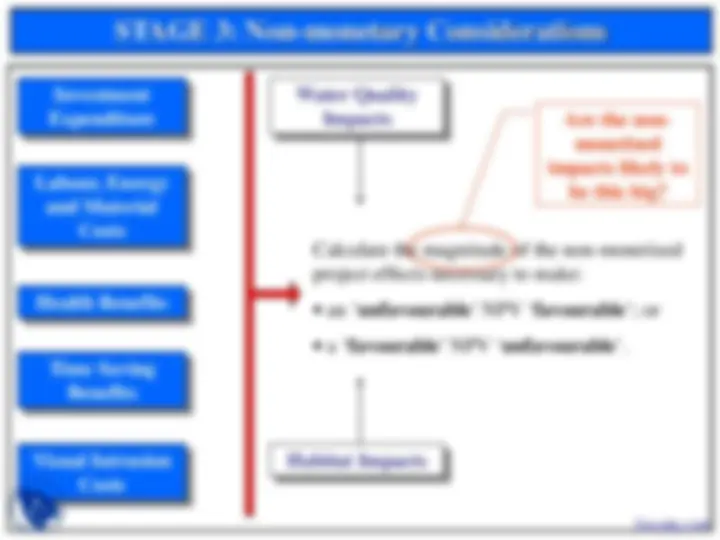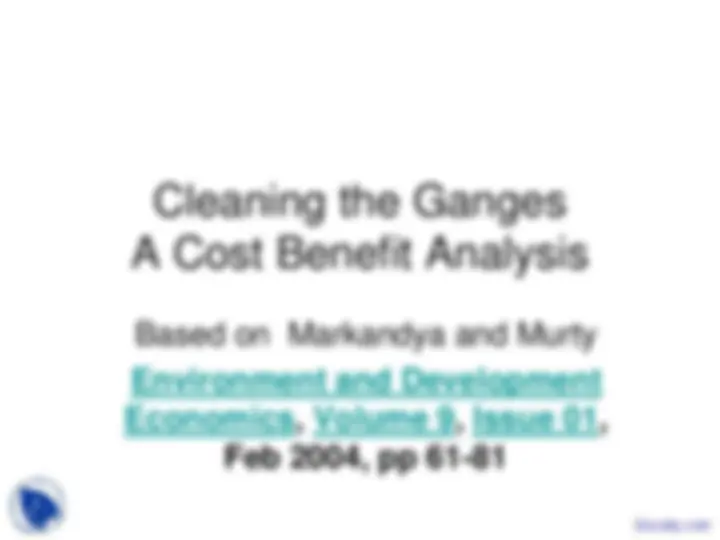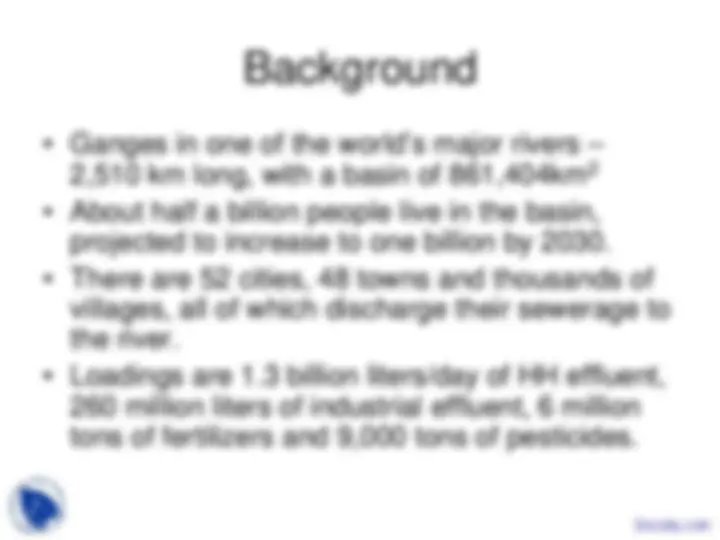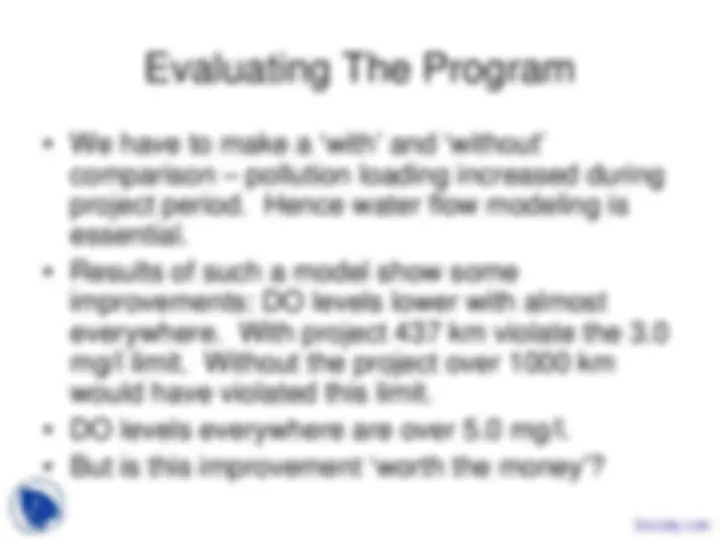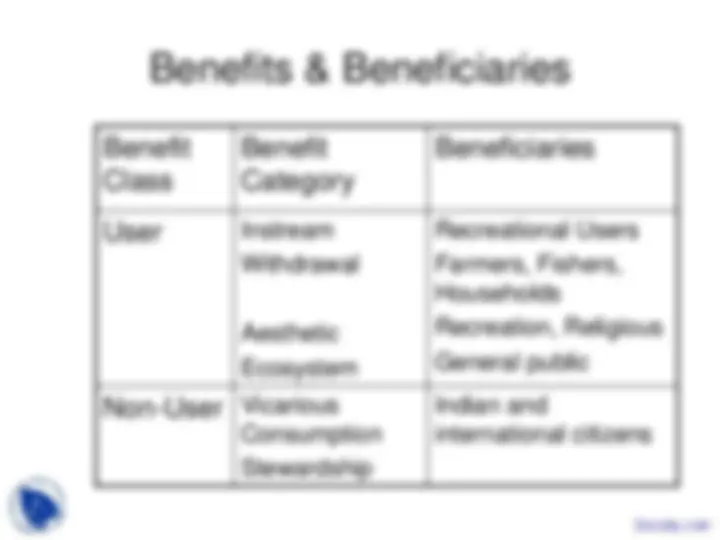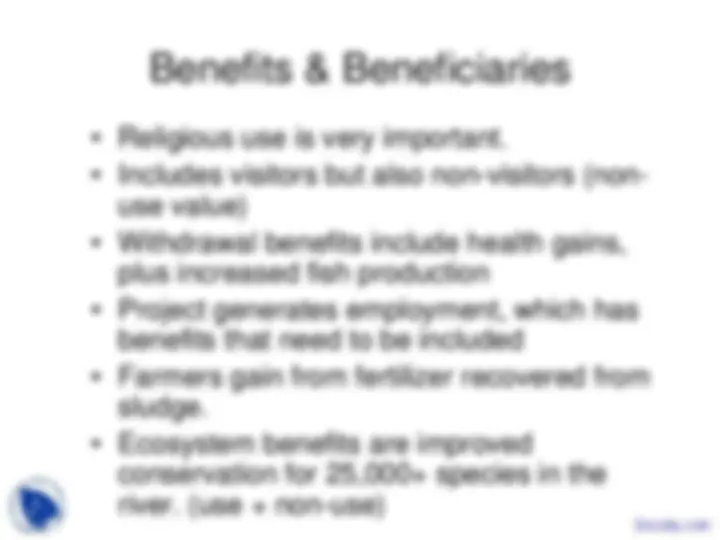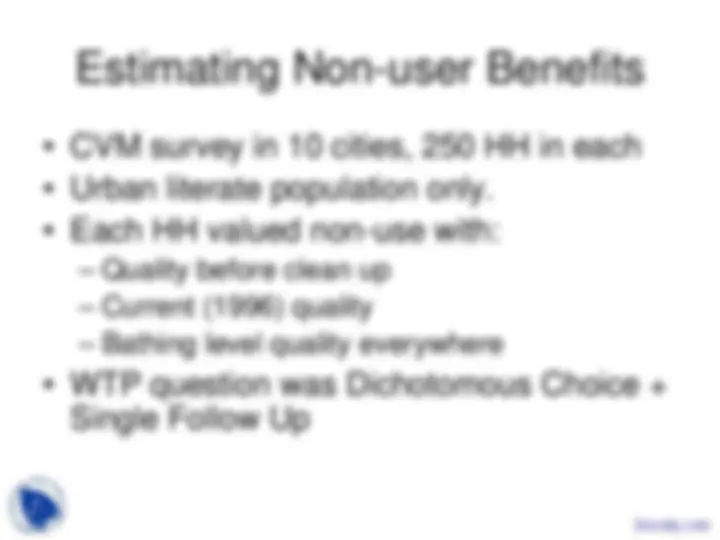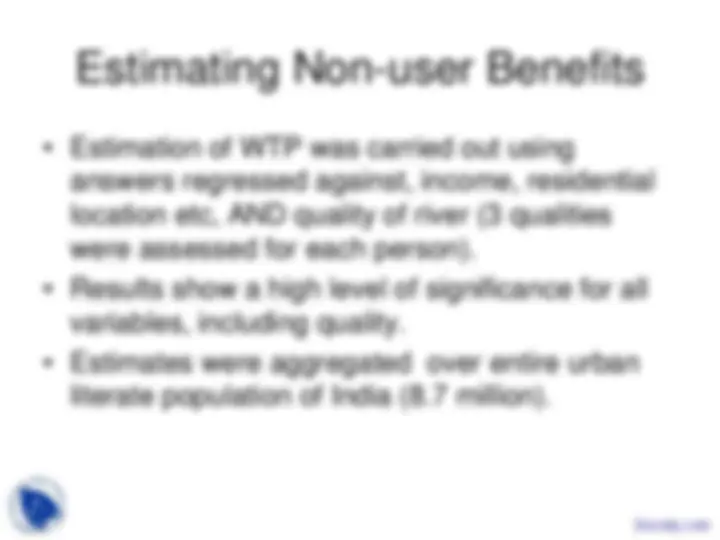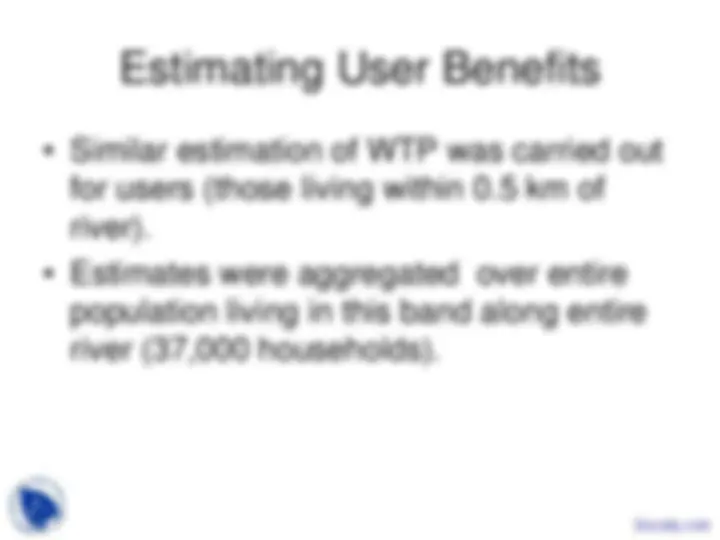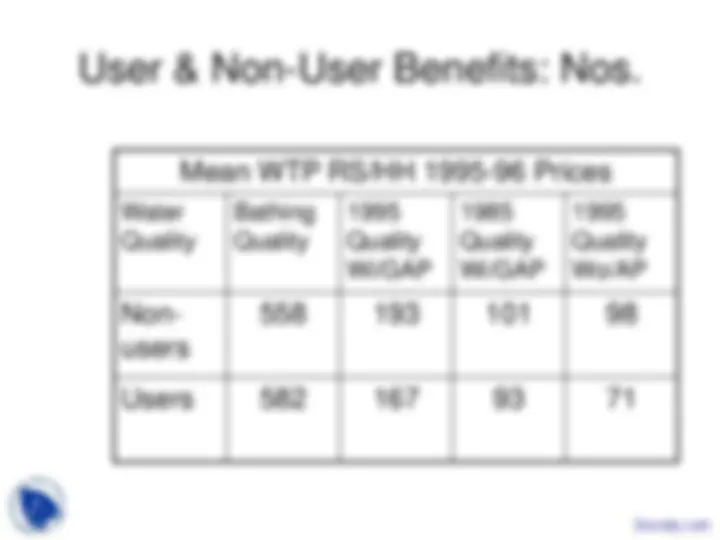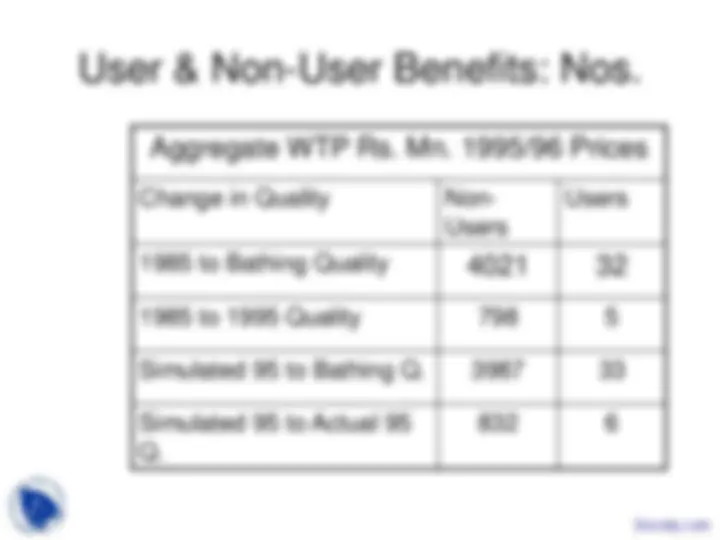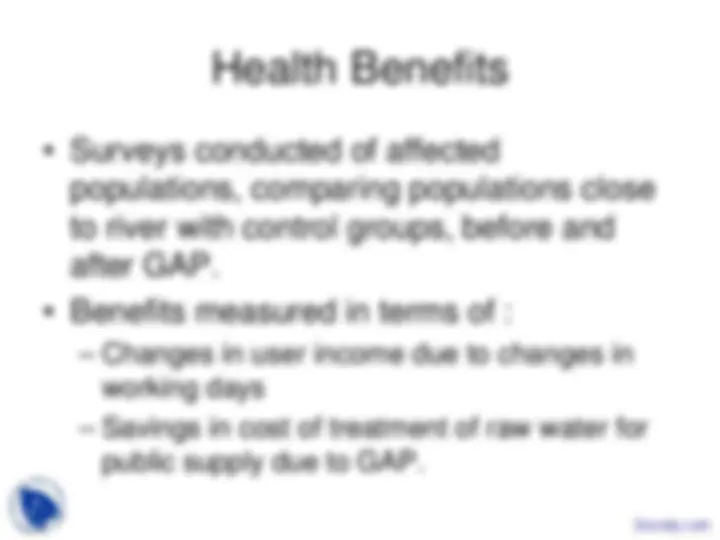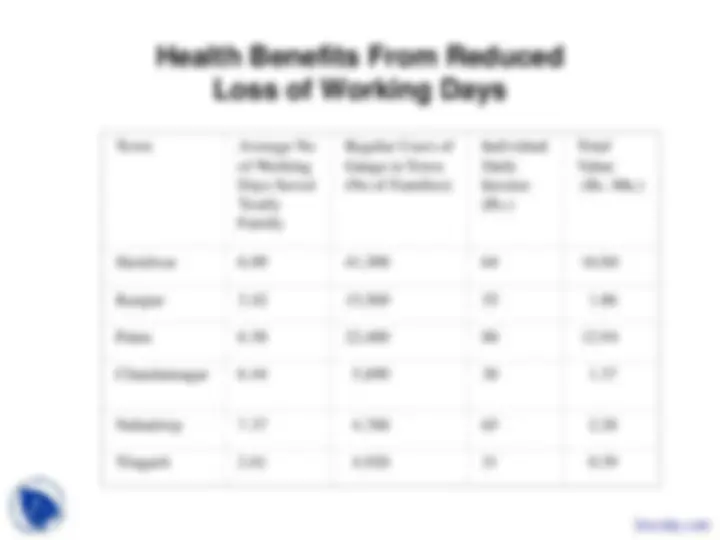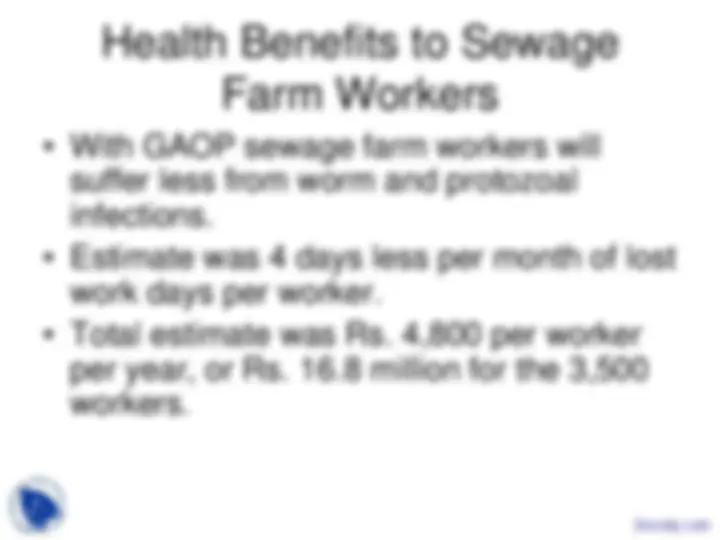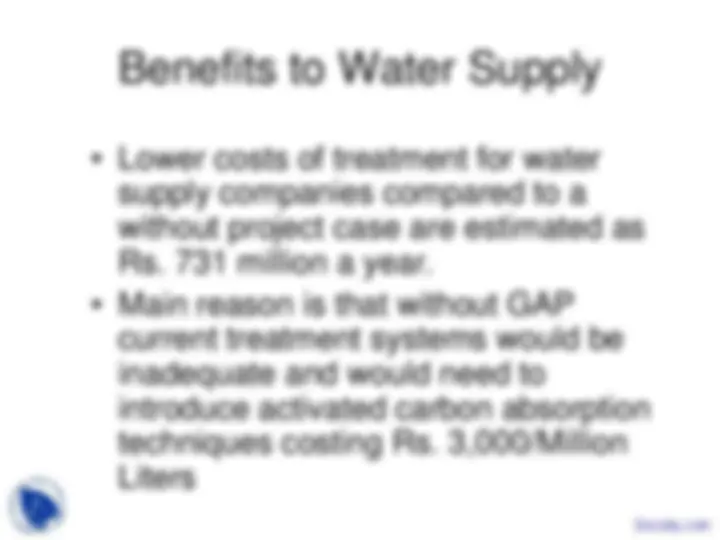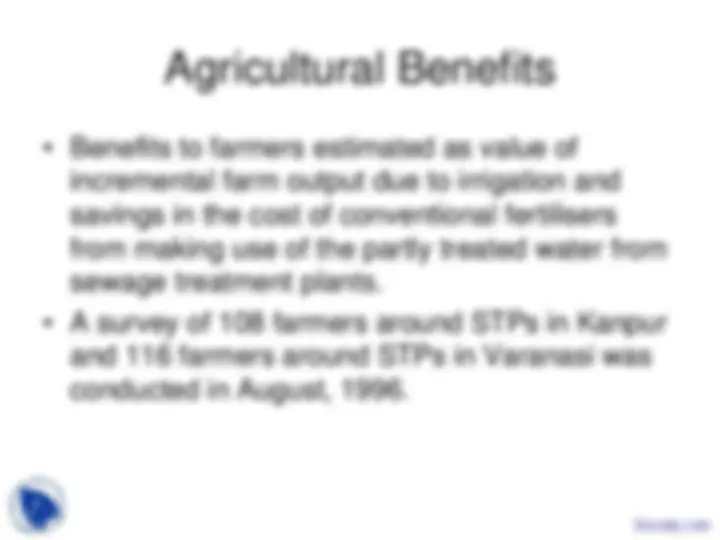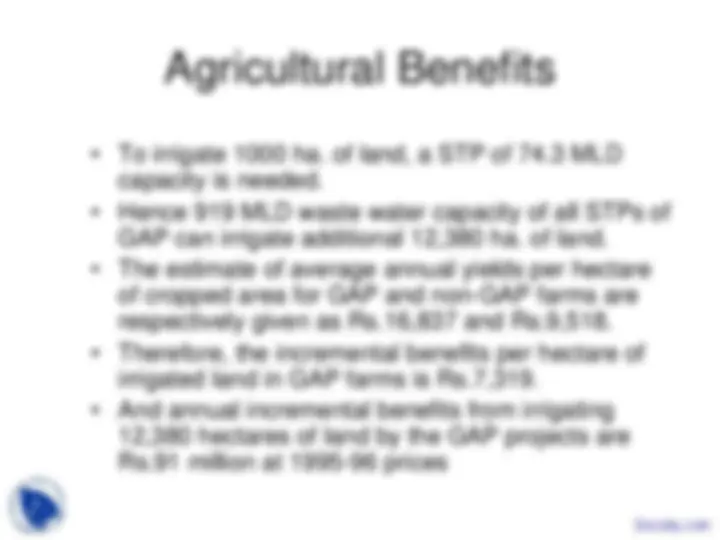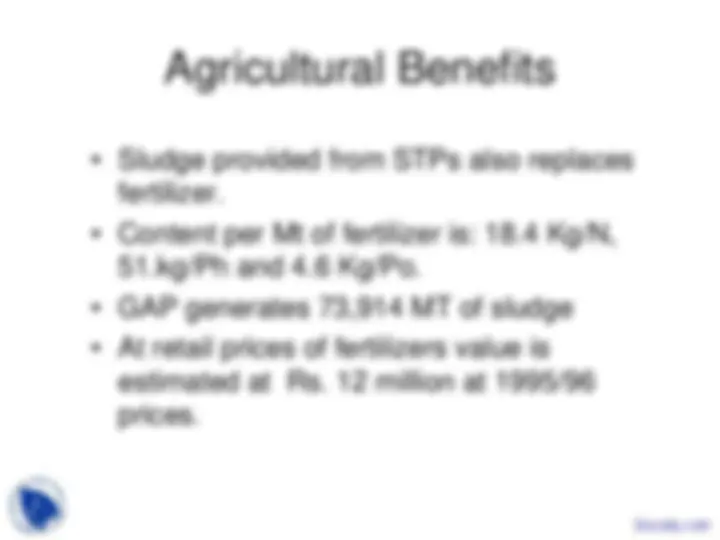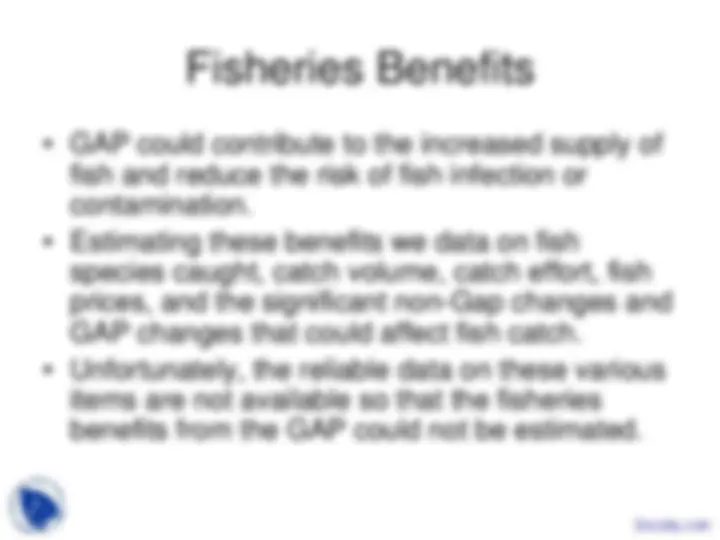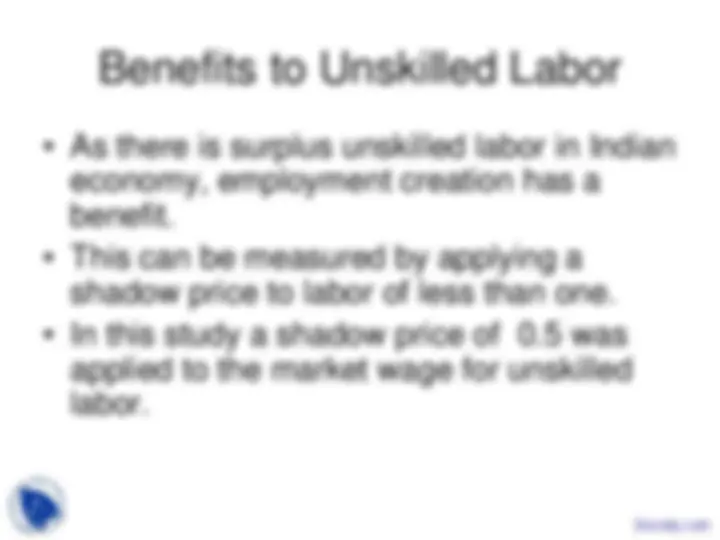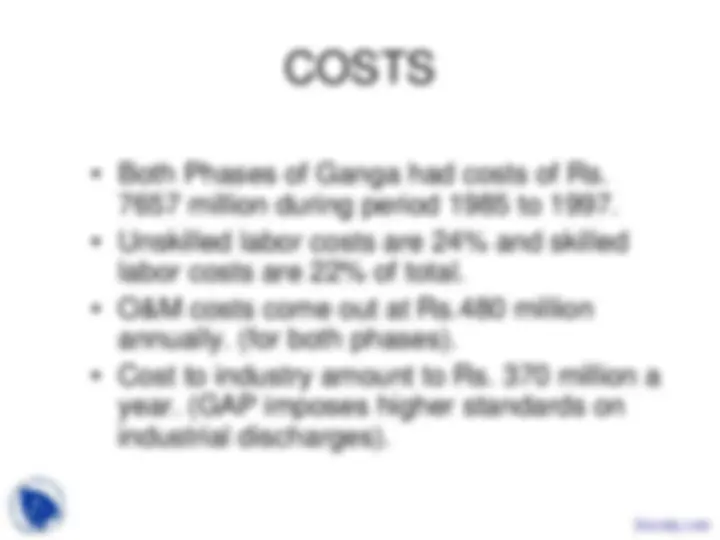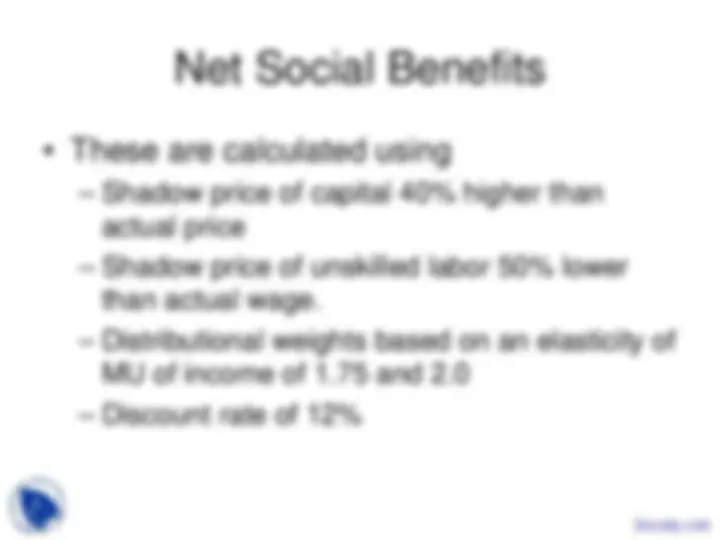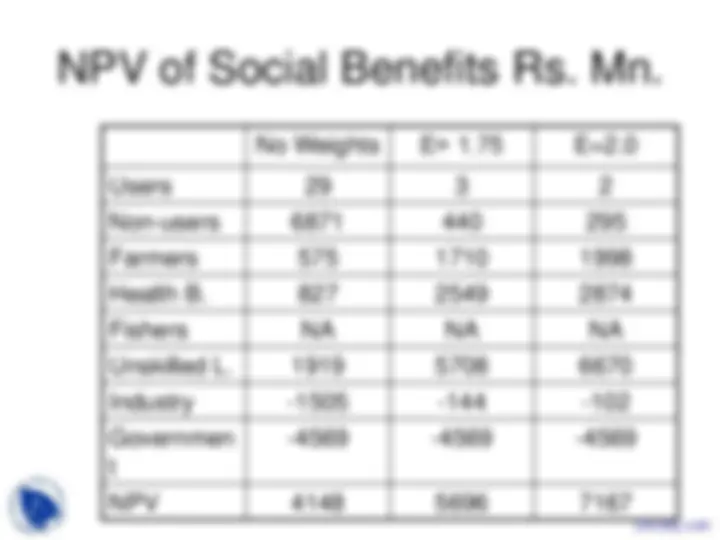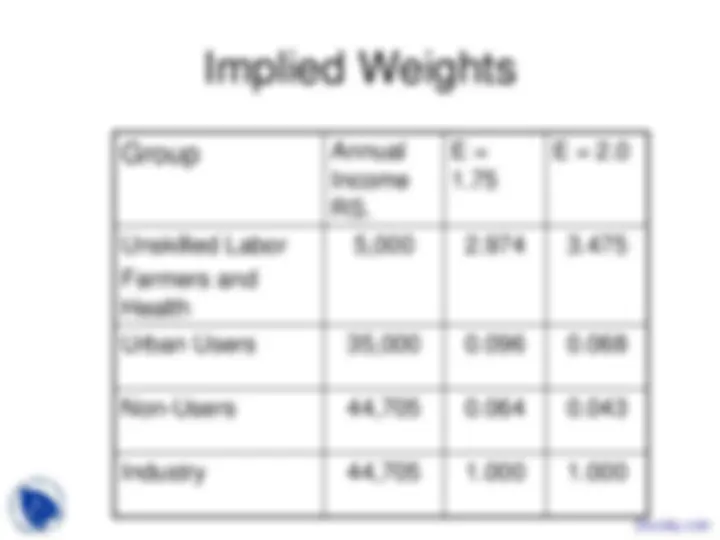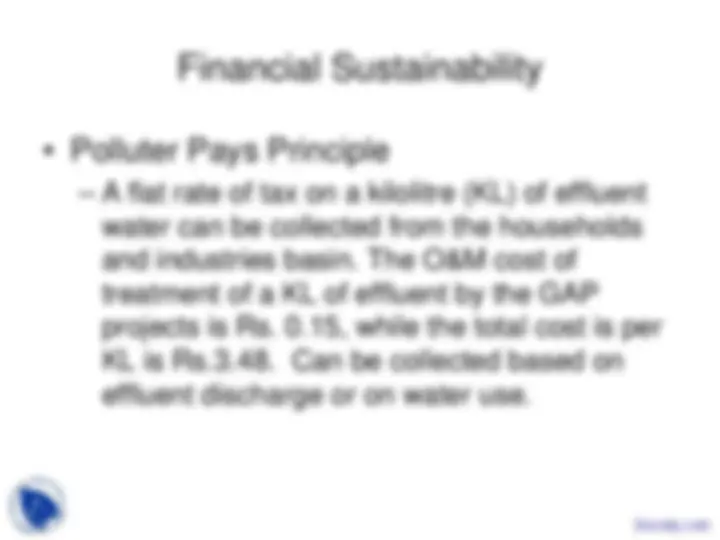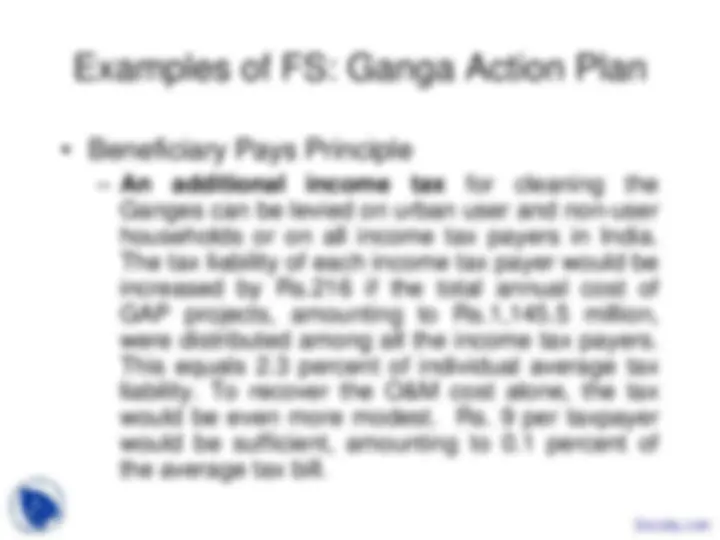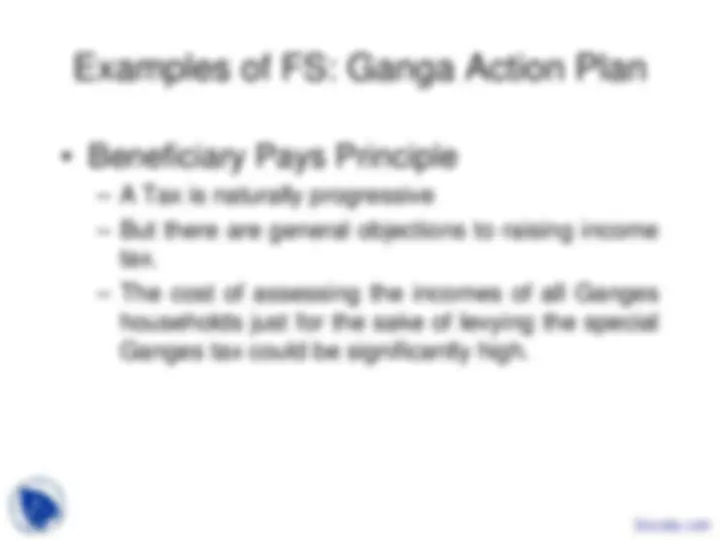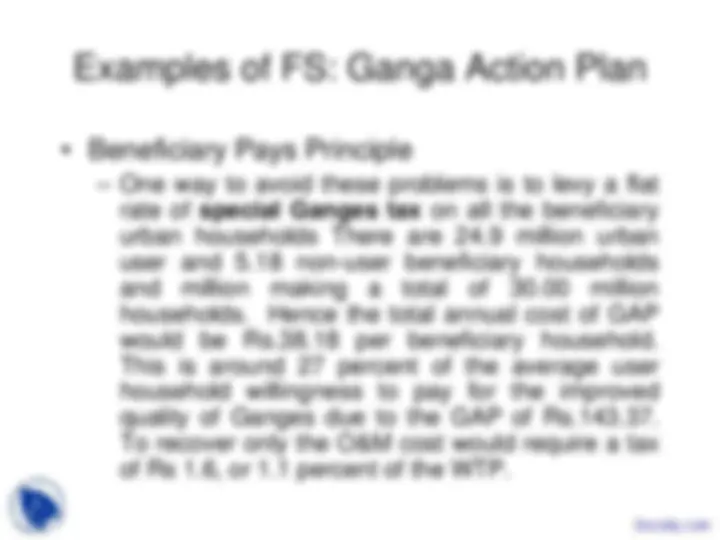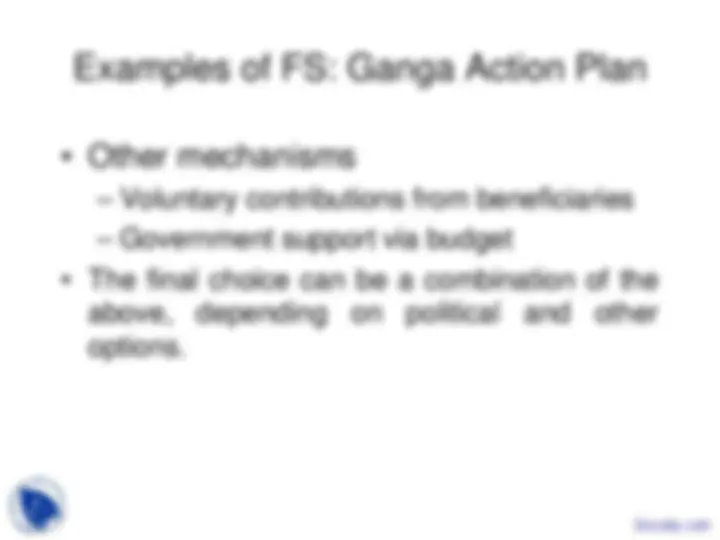Download Cost-Benefit Analysis for Ganges River Cleaning Policy and more Slides Environmental Economics in PDF only on Docsity!
Valuation and Policy
Objective
• To show the utility of valuation in setting
policy
• Cost-Benefit Analysis method
• Use of Valuation in setting taxes
STAGE 1: Project Definition - Baseline Definition and
Incremental Analysis
Project Scenario
with FGD
Baseline Scenario
without Trap
Project Appraisal
Impacts on Health -ve £5 million
FGD + Normal O & M +ve £10 million
Impacts on Health -ve £40 million
Incremental Benefit +ve £35 million
Normal O & M Costs +ve £2 million
Incremental Cost +ve £8 million
Incremental Net Benefit +ve £27 million
Total Net Cost -ve £42 million
Total Net Benefit -ve £15 million
- + -
Big external cost ( = benefit if reduced)
STAGE 1: Project Definition - Baseline Definition and
Incremental Analysis
Project Scenario
with Trap
Baseline Scenario
without FGD
Project Appraisal
Impacts on Health -ve £5 million
Trap + Normal O & M +ve £10 million
Impacts on Health -ve £40 million
Incremental Benefit +ve £35 million
Normal O & M Costs +ve £2 million
Incremental Cost +ve £8 million
Incremental Net Benefit +ve £27 million
Total Net Benefit -ve £42 million
Total Net Cost -ve £15 million
However, project to reduce emissions and associated impacts still has negative value Therefore, bad project, or is it?
STAGE 3: Discounting Future Costs and Benefits
Projects typically involve costs and benefits occurring over long periods of time.
We need to add up benefits/costs in each time period to derive a measure of total
net benefit at the time of the (investment) decision.
-£10 million + £4 million + £4 million + £4 million = £2 million ( 1 ) * -£10 million + ( 1 ) * £4 million + ( 1 ) * £4 million + ( 1 ) * £4 million = £2 million
The simplest way to do this would be to say that a benefit of £1 to individual 1 in
year 1 should be added to a £1 benefit to that individual in year 2, and so on.
This would be correct if the individual concerned did not care when benefits and
costs occurred.
But typically people do care. Why?
STAGE 3: Discounting the Future: the Bird in the Hand
Money available now can be put to productive use, at the very least
earning interest; money in the hand offers scope, including capital
productivity and the ability to purchase today.
The bird in the hand is worth three in the bush, for the future is always
uncertain with risks of death and illness, a return to high inflation rates,
collapse of markets, bankruptcies, scams and fraud etc.
People also prefer money in the present because of impatience.
The general outcome is that people discount future benefits and returns,
and to induce people to forgo present consumption requires positive rates
of interest and other assurances. This brings us to the phenomenon of
discounting.
STAGE 3: Implications of Positive Discounting
Fewer investments are undertaken, which have large initial costs and long
term returns or benefits, e.g. hydroelectric and water irrigation projects. The
benefits of long-term projects such as hardwood plantations are grossly
minimized in terms of present values.
Major future costs are not given much importance, e.g. the need to
decommission large undertakings such as a nuclear or conventional power
plant, or the cleaning up of contaminated land. The cost of storing and
disposing of nuclear or toxic wastes is significantly minimized.
The higher the rate of discount, the greater the discrimination against
future generations :
future generations may bear a disproportionate share of the future
costs of the project (or forego future benefits)
the lower will be the level of overall investment and hence the
lower (higher) the capital (natural) stock inherited.
STAGE 3: Project Selection
Year 0 1 2 3 → 30
1 Discount factor 1.000 0.9259 0.8573 0.7938 (^) → 0. 2 Investment cost £800,000 - - - (^) → - 3 Annual cost - £10,000 £10,000 £10,000 (^) → £10, 4 Total cost (3 + 4) £800,000 £10,000 £10,000 £10,000 (^) → £10, 5 Discounted total cost (4 * 1) £800,000 £9,259 £8,573 £7,938 (^) → £ 6 PVC (sum line 5) £912, 7 Annual benefit - £100,000 £100,000 £100,000 (^) → £100, 8 Discounted benefit (7 * 1) - 92,593 85,734 79,383 (^) → 9, 9 PVB (sum line 8) £1,125, 10 NPV (9 - 6) £203,
Net Present Value
Present Value Benefits
Present Value Costs
If NPV is:
Positive
Negative
Why?
Investment
Expenditure
Labour, Energy
and Material
Costs
Health Benefits
Time Saving
Benefits
Visual Intrusion
Costs
Calculate the magnitude of the non-monetised
project effects necessary to make:
- an ‘ unfavourable ’ NPV ‘ favourable ’; or
- a ‘ favourable ’ NPV ‘ unfavourable ’.
Habitat Impacts
Water Quality
Impacts
STAGE 3: Non-monetary Considerations
Are the non-
monetised
impacts likely to
be this big?
Cleaning the Ganges
A Cost Benefit Analysis
Based on Markandya and Murty
Environment and Development
Economics, Volume 9, Issue 01,
Feb 2004, pp 61-
Some Pictures!
Background
• Result has been an erosion of river quality, by
1970s over 600km were effectively dead
(anaerobic).
• Ganga Action Plan (GAP) originated from
personal intervention of Indira Gandhi and her
son. It was launched in 1985 and first phase
was largely completed in 1988. Second phase
completed in 1998
• Investment costs estimated at about $320 million
and operating costs at around $10 million a
year.
Bathing in Ganga
Benefits & Beneficiaries
Benefit
Class
Benefit
Category
Beneficiaries
User Instream
Withdrawal
Aesthetic
Ecosystem
Recreational Users
Farmers, Fishers,
Households
Recreation, Religious
General public
Non-User Vicarious
Consumption
Stewardship
Indian and
international citizens

